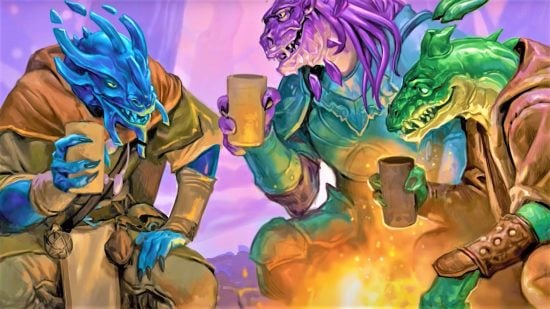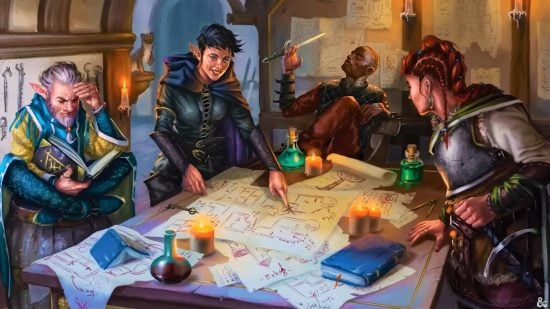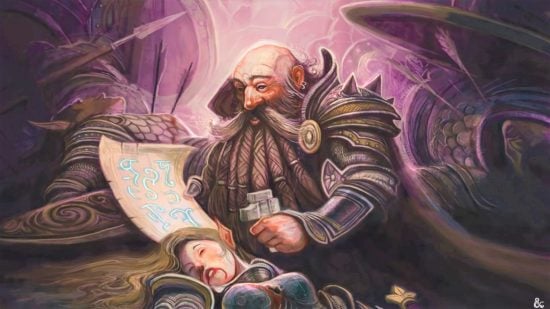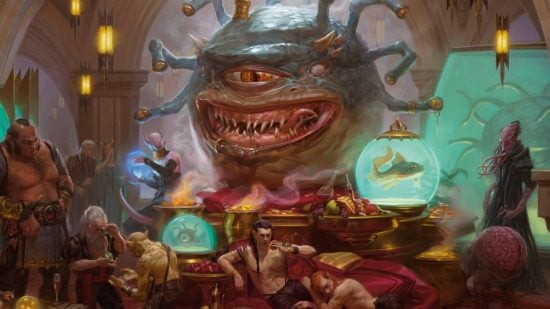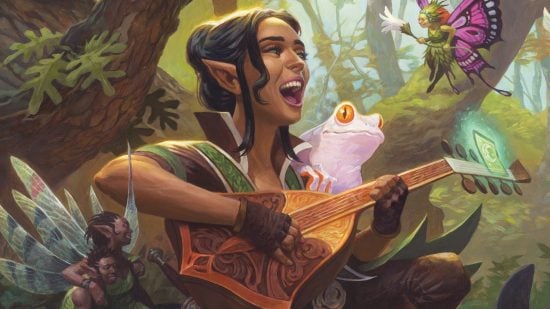Everybody needs time to unwind, and the DnD long rest and short rest 5e rules make sure the same is true for your Dungeons and Dragons character. Each has a different duration, different benefits, and different rules to remember. Luckily, resting doesn’t have to be a strenuous exercise – here’s all you need to know about the DnD short rest and long rest 5e.
Resting looks different for each of the DnD classes, so be sure to check out our class guide to remind yourself of your downtime duties. While you’re here, you can also find all the key details about DnD races, DnD backgrounds, and some neat DnD character builds.
Short rest 5e rules
Short rests last for at least an hour, so you will be doing these more often than the full, long rest. During a short rest, your character can’t do anything more taxing than eat, drink, read, and relax.
Players can choose to spend Hit Dice during a short rest in order to regain hit points. Simply roll one of your remaining dice and add your Constitution modifier and presto – your HP increases by the result, and your beat-up DnD Fighter is suddenly feeling better. During a short rest, you can spend as many Hit Dice from your pool as you like.
Some DnD classes regain certain ability uses during a short rest. For example, the DnD Druid regains uses of their Wild Shape ability.
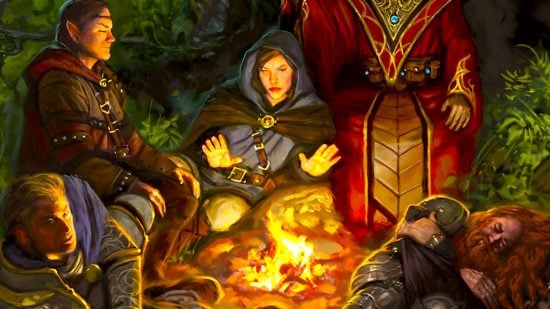
Long rest 5e rules
A long rest must last at least eight hours for your character to feel the full benefit. Of those eight hours, six must be spent sleeping. The remaining two hours can be used for light activity (examples from the Player’s Handbook include reading, talking, eating, or keeping watch).
Keeping watch is actually very important for a long rest. If DnD monsters ambush you and interrupt the long rest, you’ll need to rest again to gain any benefits. An hour of fighting, casting 5e spells, or general adventuring is enough to disrupt a long rest.
During a long rest, characters regain all lost hit points and get half their maximum number of Hit Dice back. All spellcasters regain spell slots during a long rest – except the DnD Warlock, who can also do so during short rests. Other classes get some long rest buffs too, though. For example, the Barbarian regains their Rage uses, and the DnD Bard replenishes their Bardic Inspiration.
While long rests sound pretty great, you can’t overindulge. Long resting more than once in 24 hours means your second long rest (or third, or fourth) won’t provide any benefits at all.
You also can’t long rest if you’re on death’s door. You need at least one hit point to benefit from a long rest, so grab the party’s DnD Cleric and get them to stabilize your downed friends first.
Going without a long rest
While the core rules won’t punish your party for pulling an all-nighter, there are optional rules in 5e that account for sleep deprivation in the DnD book Xanathar’s Guide to Everything.
Here, the rules dictate players must make a DC 10 Constitution saving throw for every 24 hours they go without a long rest. If they fail, they suffer a level of exhaustion 5e. For every additional 24 hours the character remains awake, the DC increases by five (resetting on their next long rest).
Rest variants 5e
The DnD Dungeon Master’s guide offers some alternative rules for resting:
Epic Heroism
This variant should be used if you want to tone down the deadliness of your DnD campaign. It can also be used if you want to throw some particularly difficult encounters at your players (but also have them live to tell the tale). In this version of the resting rules, short rests last five minutes, and long rests take an hour.
The Dungeon Master’s guide recommends limiting the amount of spell slots spellcasters can regain during a long rest, as otherwise they’ll be spamming Fireball 5e like there’s no tomorrow. You might even keep the traditional eight-hour rest for times when they want all their spell slots back.
Gritty Realism
On the opposite end of the spectrum is ‘gritty realism’. This variant turns short rests into eight-hour affairs, with long rests lasting an entire week. With resting more difficult to pencil into the adventuring calendar, players will need to be more careful during combat.
This variant can be useful if you’re running a campaign that cares more about social interactions, investigations, or political intrigue. It can also be used to discourage the more sword-happy adventurers in the party from carelessly rushing into danger.
There’s your rules recap of the short and long rest. Break’s over; it’s time to get back to adventuring. If you’re looking for a new quest, here are some of the latest adventures to try – our Keys from the Golden Vault review and Dragonlance review can help you choose the right one for you.
